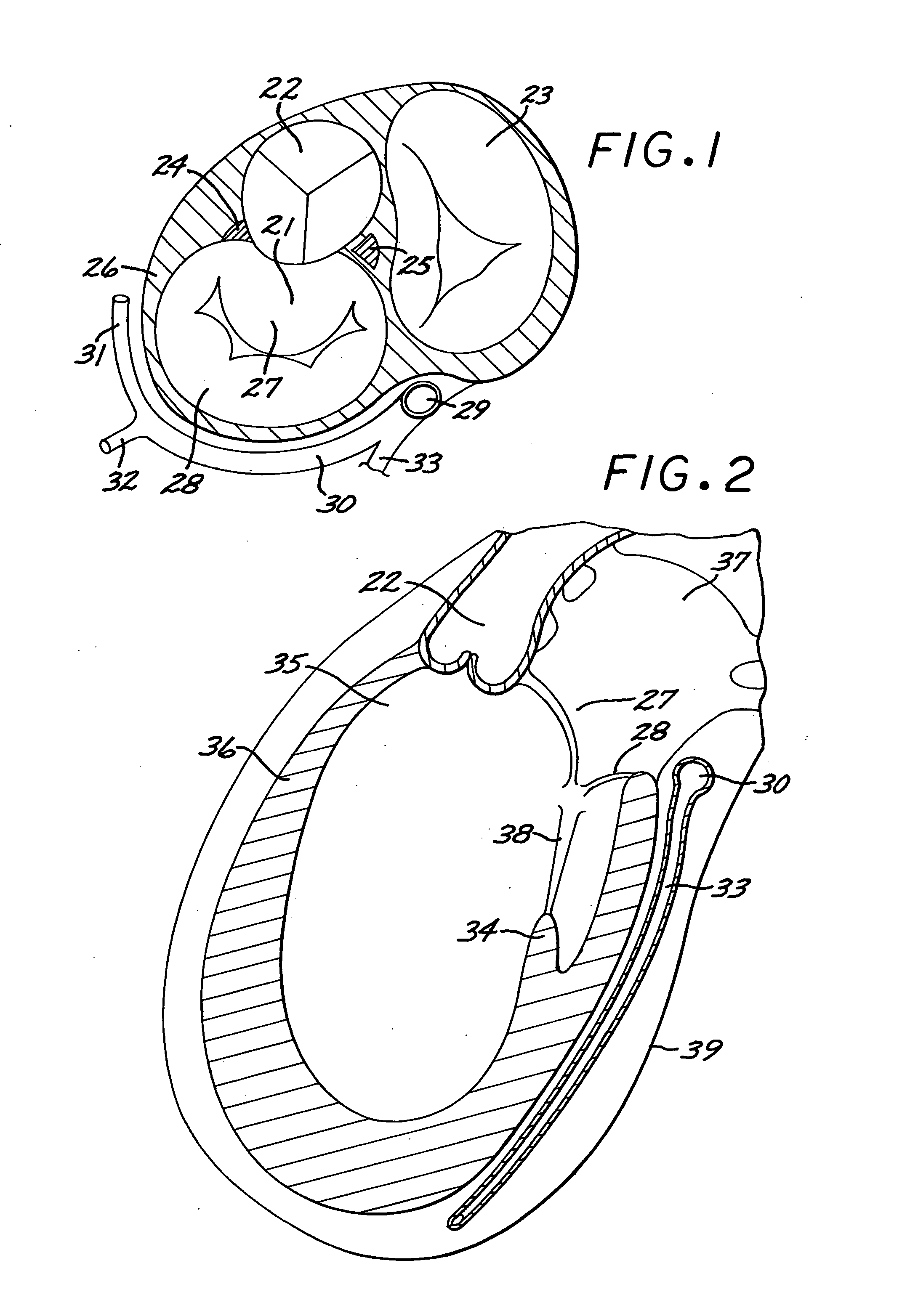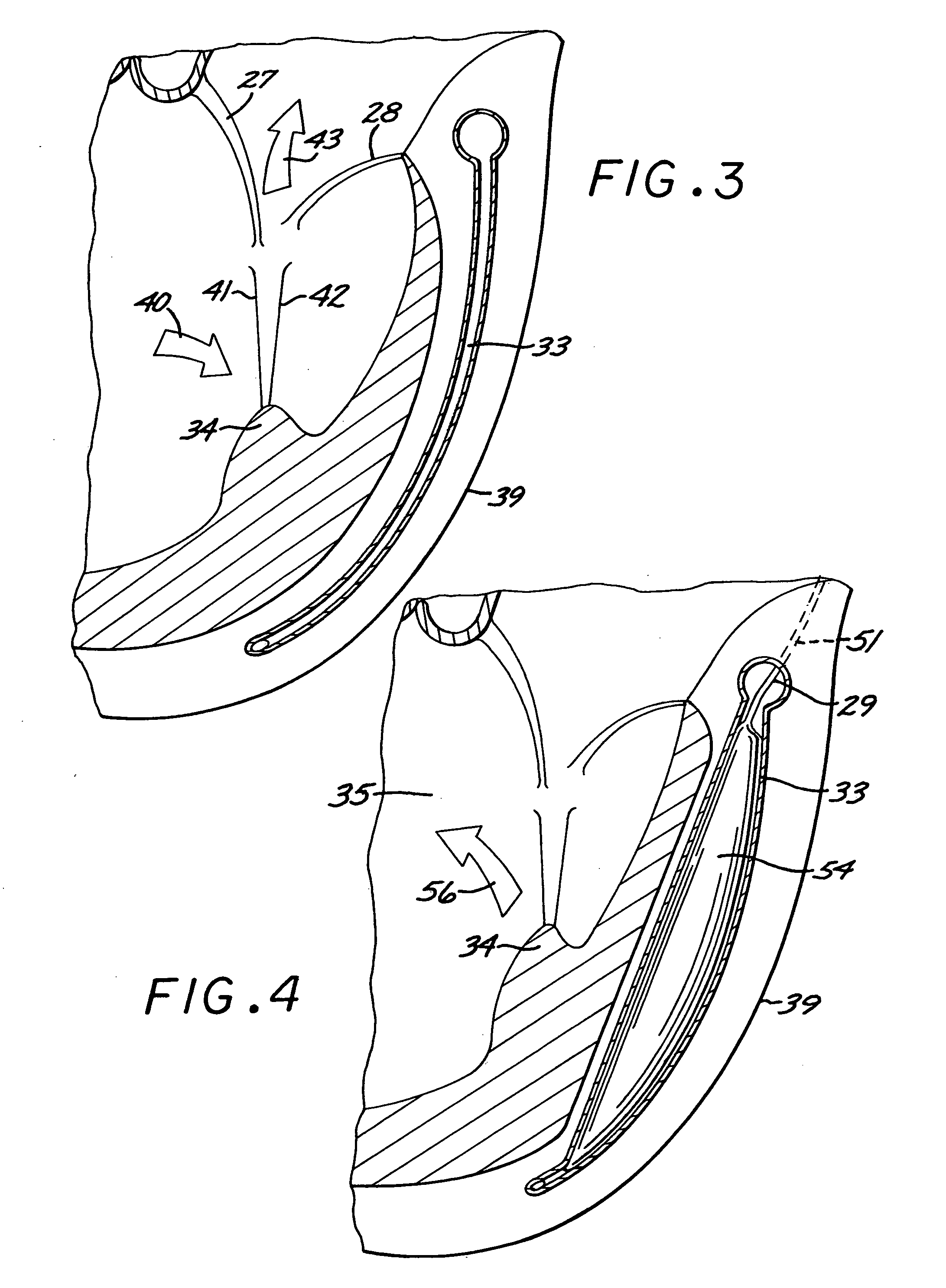System, including method and apparatus for percutaneous endovascular treatment of functional mitral valve insufficiency
a technology of mitral valve and endovascular treatment, which is applied in the field of percutaneous treatment of heart valve disease, can solve the problems of incompetence of the valve and impunity, and achieve the effect of avoiding occluded and occluded patients
- Summary
- Abstract
- Description
- Claims
- Application Information
AI Technical Summary
Benefits of technology
Problems solved by technology
Method used
Image
Examples
Embodiment Construction
[0042] The following specification, taken in conjunction with the drawings, sets forth the preferred embodiments of the present invention. The embodiments of the invention disclosed herein are the best modes contemplated by the inventors for carrying out their invention in a commercial environment, although it should be understood that various modifications can be accomplished within the parameters of the present invention.
[0043] Referring now to the drawing figures, FIG. 1 is a sketch of the base of the heart which is essential for the understanding of the present invention. The mitral valve 21, aortic valve 22 and tricuspid valve 23 are shown with the left 24 and right 25 fibrous trigones of the heart supporting the mitral annulus 26 together with the anterior 27 and posterior 28 leaflets of the mitral valve 21. The coronary sinus opening into the right atrium 29 and the coronary sinus 30 with its branches are shown: the anterior interventricular vein 31, the marginal vein 32 and...
PUM
 Login to View More
Login to View More Abstract
Description
Claims
Application Information
 Login to View More
Login to View More - R&D
- Intellectual Property
- Life Sciences
- Materials
- Tech Scout
- Unparalleled Data Quality
- Higher Quality Content
- 60% Fewer Hallucinations
Browse by: Latest US Patents, China's latest patents, Technical Efficacy Thesaurus, Application Domain, Technology Topic, Popular Technical Reports.
© 2025 PatSnap. All rights reserved.Legal|Privacy policy|Modern Slavery Act Transparency Statement|Sitemap|About US| Contact US: help@patsnap.com



